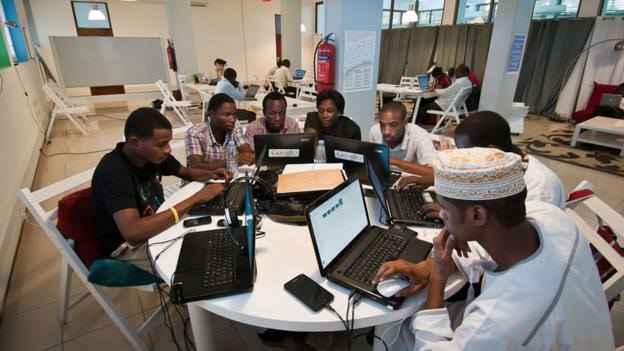From Custos To Gokada, What And How Are The Commonest Internal Conflicts Plaguing Startups In Africa Resolved?
Amir Matar had been tilling at SWVL since the startup reached across to him to assist it with its legal compliance obligations. As a legal consultant, Matar was expected to help shape the company’s future by defining it in terms of the legal compliance strategies it needed to scale to the next stage. And so for years, Matar attended to this role in the hope that one day SWVL would grow to become a bigger establishment. But when the four-year-old ride-sharing startup recently announced it would be going public via SPAC at a valuation of $1.5 billion, Matar was nowhere to be found. In fact, he had since moved on. Not that that was his voluntary decision, but that he had been forced out by the company’s management.
“First of all, let me thank you for believing in Swvl. We believe that at the moment we can’t support part-timers anymore and we are working now on that across the whole company,” an email from Swvl’s CEO to Amir was quoted as saying. “We believe also that there is still some time until [redacted] becomes a core part of what we do so we decided collectively to end your employment at Swvl. Please consider Swvl your home and come back whenever you need. I am on a plane to [redacted] now, but let’s meet when I am back.”
According to Matar, he provided business development and legal advice to Swvl for no monetary pay, but was given stock in the company. When he approached Swvl’s CEO about the shares, he was told that they were promised on a one-year cliff, which he did not agree with, he said. Amir said that the offer and acceptance of shares made with him were made without any limitations.
Read also:Barely 4 Years Old, Egyptian Ride-hailing Startup, Swvl, Goes Public At A Valuation Of $1.5 billion
While SWVL’s story is unique in that, aside from Matar, the firm has been the subject of several other employee-related complaints, several other African startup companies are presently experiencing or have had major internal conflicts that have jeopardized their very existence.
Understanding how and why these conflicts occur may serve as a major lesson for other startups that are considering or are just setting out on their journeys.

Fights Among Co-founders
Unlike other causes, squabbles among co-founders have single-handedly destroyed the lives of startups in Africa; more so, if the dissenting co-founders carry enormous responsibilities with them.
Conflict among founders, most commonly, may result from the manner of equity distribution, access to key resources in the startup, compensation over time, among other reasons.
Read also:Bigger Market Share For SWVL In Kenya As It Partners Matatus For Long Distance Trips
Interestingly though, fights among co-founders in Africa have mostly arisen immediately after major financial activities have occurred in the startups.
In Kenya, the disagreement between Kennedy Nganga, Lauren Dunford and Weston McBride of Safi Analytics, which led to the reportedly forcible ejection of Kennedy from the co-founding team (and invariably from the startup) happened soon after the startup landed its $1.8m investment from investors in 2018.
This is also true for Nigeria’s Cars45’s drama, where co-founders Etop Ikpe, Sujay Tyle alongside other executives moved out of the company in droves. The internal quarrels started in 2019, a year after OLX Group invested over $400m in the company. Insinuations are rife in the media that the co-founders were dissatisfied with the structure of equity holding in the company.
Also closely resembling this pattern of dispute is that among the co-founders of Gokada, a Nigerian ride-sharing startup. The exit of Gokada’s pioneer co-founder Deji Oduntan happened barely in March, 2019 just two months before the startup announced it raised $5.3m round from investors, suggesting uncertainties over issues related to finance and investments.
The fact that there is apparent difficulty resolving conflicts among co-founders shows that, in most cases, such conflicts can be fatal if they occur, and may affect a startup’s subsequent chances of accessing funding; and in worst case scenarios, cost it its life.
Employee-Management Fights
Virtually all internal conflicts plaguing startups in Africa have a touch of this colouration. Internal employee strife is rife. In fact, a major disagreement between ‘employees’ and Safeboda, partly ensured that the startup shut down its operations in Kenya recently.
Apart from shutting down operations, one major fall-out of the poor management of relationships between employees and management in African startups is that it has led to the resignations of the chief executive officers of the concerned startups.
Read also:SWIFT Launches , Fast, Cost-effective Service for Low-Value Cross-Border Payments.
This is evident in Wejapa, a Nigerian startup that helps tech talent gain access to job opportunities across the world. Following a series of complaints of exploitation and compromised payment standards from a host of the startup’s software engineers, CEO Favor Ori was forced to resign.
Where the rancorous relationships do not result in the shutting down of the operations or the resignations of the CEOs of the startups concerned, the startup may be subjected to intense public opprobrium and, and in worst cases, exposed to litigation liabilities (which are as a result of the employees deciding to slug it out with the startup company in courts.)
For instance, the rancorous relationships between SWVL and its employees over time have led to some of the employees leaving negative reviews for the startup in public domain — which may have significant effects on the startup’s quest to attract the best of talent. One example of how SWVL’s reputation has been impacted by this is this screenshot below of a LinkedIn interaction between a Swvl recruiter and an applicant (posted on Facebook).

Poor management of employee-startup relationships has also landed some startups in courts, which have, in some cases, turned out again them. This is particularly the case of iKOKOtv, which has been subject of such litigation cases in recent time. Just recently, a Nigerian court gave judgment against the company in a suit bordering on wrongful termination of employment, interpretation of a non-disclosure agreement, among others.
Rancorous Startup-Investor Relations
At most, a poor relationship with investors will succeed in giving both the investor and the startup big red flags before watchers-by.
This is certainly what HAVAIC, the prolific South African investor, understood when it recently called off a $4.45m court case against Custostech, a South African startup that protects content using blockchain technology.
Before calling off the case, HAVAIC was said to have signed a termsheet with Custos Media Technologies to close a convertible loan investment with Custos. All of the investment arrangements were agreed upon, and Custos confirmed that the terms had been authorized by their board, the venture capital firm said. According to HAVAIC, Custos then breached the agreement and opted not to proceed with HAVAIC’s investment. Custos’ CEO G-J van Rooyen, on the other hand, refuted this claim, claiming that the business did not sign any agreement with HAVAIC and that it was within its rights to reject its investment offer.
“We believe the founders and Custos have enormous potential to be internationally successful. Our preference is to restore the breakdown and work with the business to its full potential,” Ian Lessem, the CEO of HAVAIC said, before settling out of court with Custos.
Similar incident was reported at HealthPlus, a Nigerian healthtech company. According to founder Bukky George, she was lured to transfer 51.1% stake to a private equity investor, which she said, allowed the investor to oust her as the CEO of the company and replace her with another person.
Prior to the dispute, George owned 48.9% of HealthPlus, while the other investors owned 51.1 percent. However, this shareholding structure proved problematic. George stated that the investors committed to invest $18 million in the company, but only $10 million had been released since the deal was signed in 2018, meaning that the investors were not fully entitled to the 51.1% stake they claimed in the company.
Uganda’s Dunamiscoins’ recent scandal also represents the mounting cases of poor investor-startup relationships, misrepresentations and breaks in communication.
Notably, poor investor-startup relationship appears to be the most powerful internal startup conflict that tend to have crushing effects on startups, as it tends to shrink the chances of future access to funding for the startups affected.
Also notable is the fact that most investor-startup disputes are not largely reported for fear of the effects it would have on the startup’s funding journey as well as on the reputation of the investors.
Ethical Misconduct And Frauds Involving Startup Executives
This has the effect of not only destroying the reputation of the persons involved, but also has the effect of returning the operations of the startup to zero, especially if a major co-founder (the brain behind) of the project is involved.
This was disastrous for South Africa’s Springleap, a subscription-based platform for brands and agencies to source solutions for creative briefs. Springleap’s co-founder, Eran Eyal, was arrested in 2018 on the instructions of New York Attorney General on the grounds that he masterminded the stealing of $600,000 from investors — by fraudulently soliciting investors to purchase convertible notes through false representations about his company, Springleap.
Eran was found guilty in 2019 and was finally deported to Israel from the US in 2020. The huge effects the whole saga had on the startup could only be imagined.
Apart from fraud, sexual harassment has the effect of instantly killing the career of co-founders, if convicted. This would, in turn, push the startup into an entirely uncertain situation.
But for the exoneration of the CEO of Nigeria’s Tizeti, by an independent special investigation committee, from an allegation of sexual harassment, Kendall Ananyi’s career would have hit a brick wall, as was the fate of Kenya’s Alternative Circle, Anthony Kariuki and Ushahidi’s Daudi Were.
| S/N | NAME OF STARTUPS | BASE COUNTRY OF OPERATIONS | YEAR FOUNDED | NATURE OF INTERNAL CONFLICT | YEAR CONFLICT WAS REPORTED | HOW RESOLVED | YEAR OF RESOLUTION OF CONFLICT |
|---|---|---|---|---|---|---|---|
| 1 | Safi Analytics | Kenya | 2017 | Kennedy Nganga, one of the ‘co-founders’ alleged that expat co- founders Lauren Dunford and Weston McBride dismissed him from the company immediately the company raised $1.8m, and after the failed to procure a negotiated exit from him. | 2018 | In April 2021, Nganga claimed that a crowdfunding campaign he initiated to institute a law suit against Safi was disapproved on M-Changa platform, one of Kenya’s crowdfunding platforms, citing his inability to meet the platform’s verification standards as one of the reasons for the rejection. | – |
| 2 | HealthPlus | Nigeria | 1999 | Founder Bukky George alleged that she was lured to transfer 51.1% stake to a private equity investor, which allegedly allowed the investor to oust her as the CEO of the company and replace her with another person. Mrs George owns 48.9% of HealthPlus, while the other investors own 51.1 percent. The reason for this is because the investors committed to invest $18 million in the company, but only $10 million has been released since the deal was signed in 2018. | 2020 | Under litigation | – |
| 3 | Cars45 | Nigeria | 2016 | Co-founder, Etop Ikpe, Sujay Tyle alongside other executives (11 in total) left the company reportedly over squabbles related to equity structures and a potential buy-out. The squabbles started in 2019, a year after OLX Group invested over $400m in the company. | 2020 | Etop Ikpe has since proceeded to launch a rival company, Autochek. | – |
| 4 | Cellulant | Nigeria; Kenya | 2014 | Nigerian co-founder, Bolaji Akinboro resigned following reports of irregularities concerning post-audit results of the company’s platform, Agrikore. Also sacked were 35 employees for related offences. | 2020 | No reported case of how the conflict was resolved, but Bolaji finally left to found a new agritech platform, voriancorelli.com. | – |
| 5 | Risevest | Nigeria | 2019 | Former employee accused startup’s CEO of creating toxic work culture. | 2021 | CEO apologized, admitting that he mishandled the situation which culminated in the departure of the startup’s marketing lead from the company. | 2021 |
| 6 | Wejapa | Nigeria | 2020 | Developers accused startup CEO of extortion and underpayment for jobs and services they offered. | 2020 | CEO stepped down to allow for an independent investigation to be conducted. In the interim, co-founder and COO of WeJapa, took over the reins of the company. | 2021 |
| 7 | Gokada | Nigeria | 2017 | Co-founder, Deji Oduntan, resigned over unconfirmed reports of internal squabbles between members of the management team over funds management. In 2018, staff and software developers also exited the company enmasse, citing uncertainty about the company’s future. Ayodeji Adewunmi, Oduntan’s replacement (as Gokada President and Co-CEO.) also reportedly left the company in 2020. | 2019 | – | – |
| 8 | Ushahidi | Kenya | 2018 | Allegations of sexual misconduct against co-founder, Daudi Were. | 2017 | No official report, but co-founder proceeded to found a little known company Mikakati since 2018. | – |
| 9 | Tizeti (Wifi.com.ng) | Nigeria | 2017 | Allegations of sexual misconduct against CEO of the company, Kendall Ananyi, by a former Entrepreneur-in-Training at the Meltwater Entrepreneurial School of Technology (MEST). | 2020 | An independent legal counsel found, based on investigations, that no case of sexual harassment had been proved, a finding that was accepted by the Independent Special Investigation Committee. As a result, Tizeti’s CEO, Ananyi, has since been reinstated. | 2020 |
| 10 | Alternative Circle | Kenya | 2016 | Allegations of sexual misconduct against, against CEO Anthony Kariuki. | 2017 | – | – |
| 11 | Custos | South Africa | 2014 | Sued by investor HAVAIC. HAVAIC was said to have signed a termsheet with Custos Media Technologies to close a convertible loan investment by HAVAIC and its investors in Custos. All of the investment arrangements were agreed upon, and Custos confirmed that the terms had been authorized by their board, the VC said. According to HAVAIC, Custos then breached the agreement and opted not to proceed with HAVAC’s investment. Custos CEO G-J van Rooyen, on the other hand, refuted this claim, claiming that the business did not sign any agreement with HAVAC and that it was within its rights to reject its investment offer. | 2020 | Custos and HAVAIC reached an agreement on the 30th of November 2020. The dispute was said to have been settled in a friendly and discreet manner. | 2020 |
| 12 | Springleap | South Africa | 2007 | The New York Attorney General arrested founder Eran Eyal on August 23, 2018 and accused him the next day with stealing $600,000 from investors by fraudulently soliciting investors to purchase convertible notes through false representations about his company, Springleap. | 2018 | Eran was found guilty, in 2019, of cheating investors out of millions of dollars in three investment schemes, including a $42.5 million (R615 million) initial coin offering, by a New York court (ICO). He was finally deported to Israel from the US in 2020. | 2019 |
| 13 | WhereIsMyTransport | South Africa | 2015 | Internal employee squabbles suggested the company was in deep trouble, partly caused by mass retrenchment. | 2018 | Retrenchments occurred as a result of the company “going through a growth phase” and the necessity “to bring people of various experience into the business who are more focused on delivery and go to market,” according to WhereIsMyTransport. | – |
| 14 | iROKOtv.com | Nigeria | 2011 | By forming the firms known as africagent ltd. and freemedigital to operate the business of digital music distribution and offering other entertainment promotional services, iROKOtv.com sued former senior manager for breach of contract. According to iROKOtv, this is a violation of the non-compete and confidentiality duties outlined in the employee non-disclosure agreement signed by both parties on December 1, 2011. | 2015 | Court ruled against iROKOtv.com | 2020 |
| 15 | WiGroup | South Africa | 2007 | The company’s chief financial officer (CFO) resigned amid a “financial mismanagement” saga that struck the company. The incident unfolded just months after the company received funding from Virgin Group and retail solutions vendor Smollan to help it enter new and developed markets more quickly. The company had previously requested a forensic audit and as a result had been compelled to restructure its operations and downsize its workforce. | 2018 | – | – |
| 16 | SWVL | Egypt | 2017 | Several former Swvl employees, including the engineering team, gave Facebook testimonials regarding claimed cases of arbitrary dismissal, maltreatment, labor law violations, and a general atmosphere of discomfort and dread inside the company’s suburban Cairo headquarters. | 2019 | Founder has been making bold public relations moves to clear the allegations. | – |
| 17 | Dunamiscoins | Uganda | 2019 | Following 4,000 investor complaints, two of the company’s directors, Samson Lwanga and Mary Nabunya, were charged with 65 counts of collecting money under false pretenses and conspiracy to conduct a felony. | 2020 | Under litigation | – |
| 18 | Bitfxt | Nigeria | 2016 | Investor-startup squabbles that led to the startup $15m funding returned to the investors. | – | Funds invested repatriated to investors’ base. | – |
| 19 | Safeboda | Uganda | 2015 | Rancorous relationships with riders in Kenya | 2020 | Business operations shut down in Kenya. | – |
Some Time-tested Recommendations On Managing Internal Conflicts In Startups
- Strong public relations strategies: A startup should have strong PR strategies that will assist in managing its public image. This includes establishing friendly relationships with the press, etc.
- Placing all official communications under ‘CONFIDENTIAL’, ‘WITHOUT PREJUDICE’ or “SUB JUDICE” to prevent unfavourable communications from leaking to the public without consequences.
- Timely and effective employee crisis management strategies. Strategies should be decisive, fair and not prevaricating.
- Entering into standard contracts with co-founders with clear clauses on communications, vesting, cliff and exit periods.
- Strict due diligence on investors before acceptance on offers and investments, especially if the investments will involve some significant dilution of founders’ equity.
- Crisis management off public radar. Internal disputes should strictly be treated as internal affairs.
- Unethical conducts should also be handled off public radar, if practicable.
- Strong and professional leadership from the CEOs. CEOs should limit the frequency of unnecessary vituperations on workers.
- Use cool-off period and rebranding if the situation created by an internal impasse becomes severely unfavourable to either the startups or the affected persons.
Africa startups conflicts Africa startups conflicts Africa startups conflicts Africa startups conflicts Africa startups conflicts Africa startups conflicts Africa startups conflicts Africa startups conflicts Africa startups conflicts
Charles Rapulu Udoh

Charles Rapulu Udoh is a Lagos-based lawyer who has advised startups across Africa on issues such as startup funding (Venture Capital, Debt financing, private equity, angel investing etc), taxation, strategies, etc. He also has special focus on the protection of business or brands’ intellectual property rights ( such as trademark, patent or design) across Africa and other foreign jurisdictions.
He is well versed on issues of ESG (sustainability), media and entertainment law, corporate finance and governance.
He is also an award-winning writer










